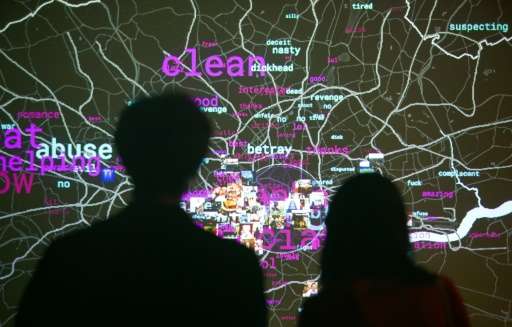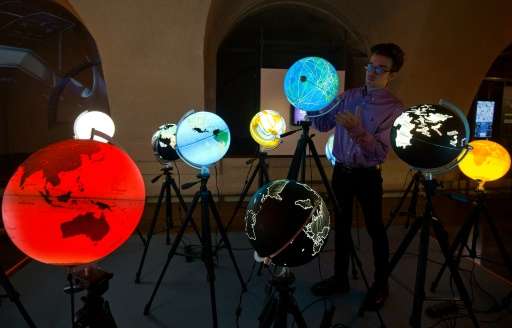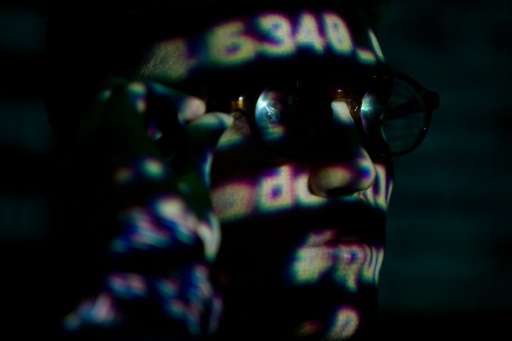Selfies to undersea cables: Big Data displayed in London

From posting on social networks and online shopping to sending emails and instant messages, we are producing more data than ever, prompting a new exhibition in London to explore the dangers and possibilities of this information explosion.
The show helps visitors get to grips with the reality and implications of so-called Big Data, tracing the system from the smartphones in our pockets to undersea cables to whirring data-storage warehouses.
"Big data is the defining feature of our times," said Claire Catterall, director of exhibitions at Somerset House where the Big Bang Data show is held from Thursday until February 2016.
"It affects each and every one of us and will define our future."
The exhibition begins with a room in which images of a data centre are projected, showing the bare concrete walls, wires and metalwork that contain "The Cloud" of information normally invisible to most.
Posters underscore the scale of recent change, explaining that 90 percent of data now existing was created in the last two years, most created by people's everyday activities rather than by science, industry and administration as in the past.
In the London Situation Room, real-time social media posts are analysed live, giving an instant measure of the British capital's mood depending on their tone.

"Data can seem abstract but we wanted to show that it is us," said Amanda Taylor of data visualisation studio Tekja, which created the display.
"It can tell us something as intimate as our likes and dislikes. It can tell the story of a city."
Viewers can find their own social media posts unexpectedly on the walls of the exhibition, which features photographs stolen from hacked computers as well as taken unknowingly from social networks, probing issues of privacy and surveillance.
Another unsettling aspect is demonstrated in "Stranger Visions" by Heather Dewey-Hagborg, a series of realistic faces based on genetic information from DNA samples taken from discarded chewing gum and cigarette butts.
One artist Nicholas Felton has created glossy corporate-style "Annual Reports" of his own life, with details such as his meals, emails sent and names of who he communicated with shown in precise graphs.
Instantaneous horror

While the exhibition sets out the dark side of Big Data and the revelations of mass surveillance by former US National Security Agency contractor Edward Snowden, it also explores the long history of how information has been used for the greater good.
Featured in the exhibition is the 1785 diagram "Description of a Slave Ship", a poster showing the small spaces slaves were packed into as they were taken across the sea—perhaps one of the first data visualisations created for a political cause.
The print "seemed to make an instantaneous impression of horror upon all who saw it" according to a 1808 account by abolitionist Thomas Clarkson, and was credited with helping change opinion against slavery.
Other pioneers are featured such as John Snow, who plotted cholera outbreaks in London identifying how it was transmitted, and Florence Nightingale who used statistics to reduce soldiers' deaths, working out that many were dying because of poor sanitation.
Visitors can sit on beanbags and gaze up into a planetarium of stars—in fact a visual representation of live stock market prices in which every traded company is a star.
Jonathan Reekie, the director of Somerset House, said: "It's rare that you can visit an exhibition and say that this is a topic that touches the lives of everybody who visits it".
© 2015 AFP


















